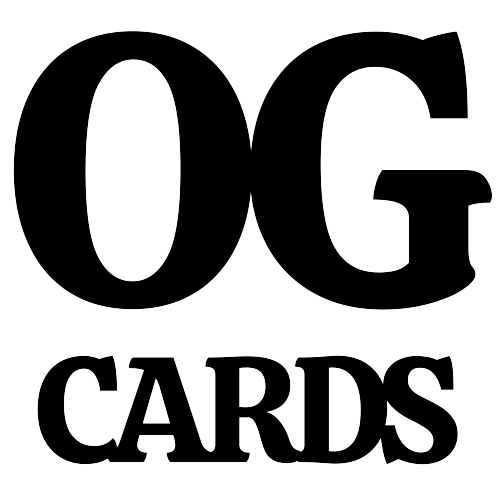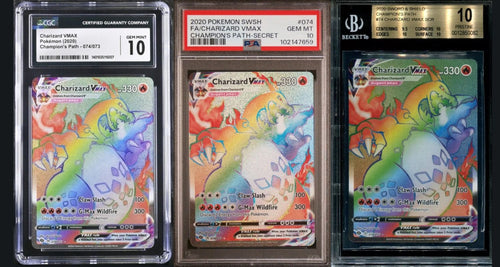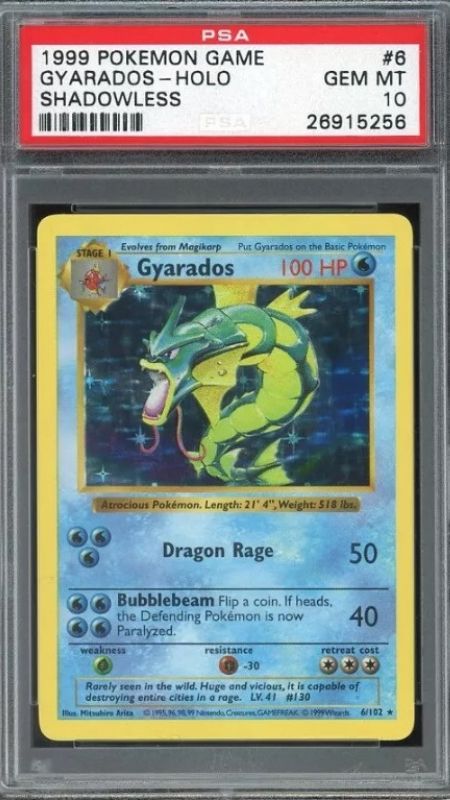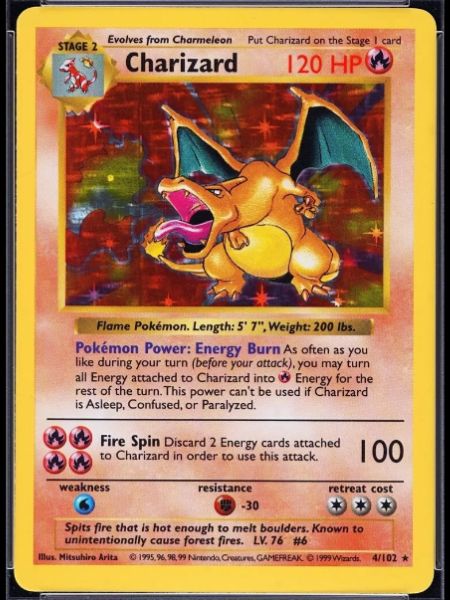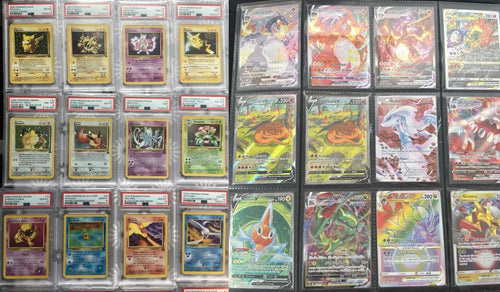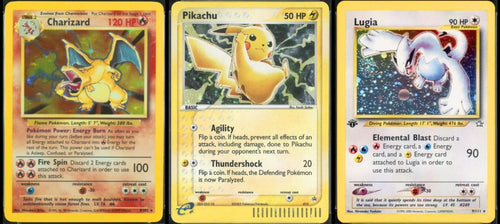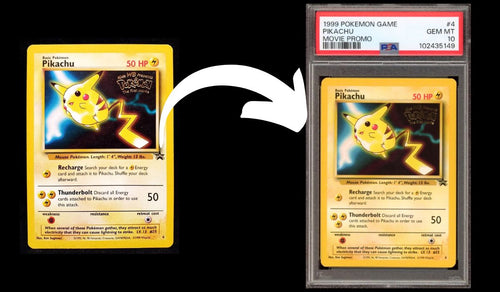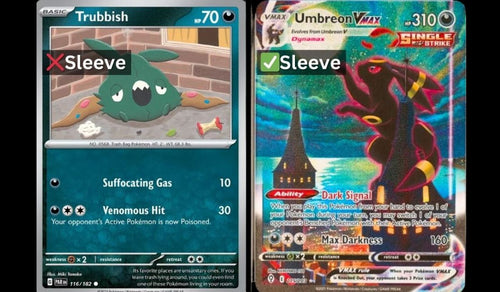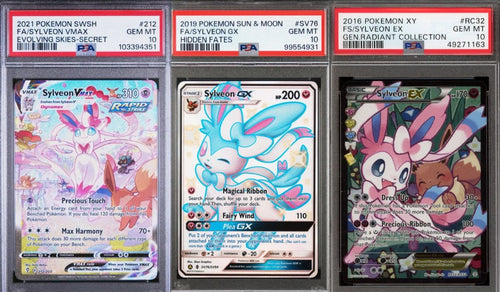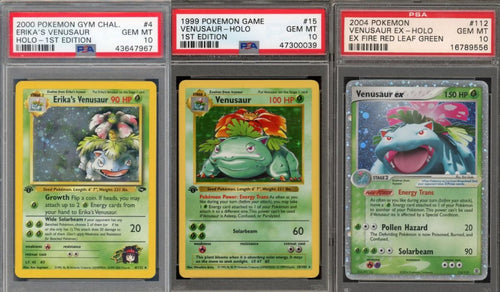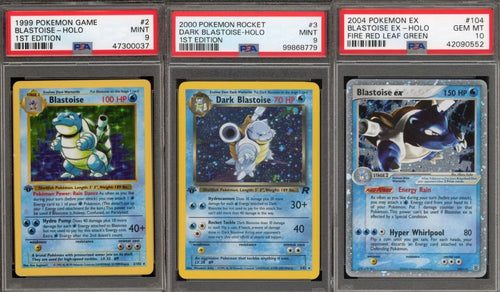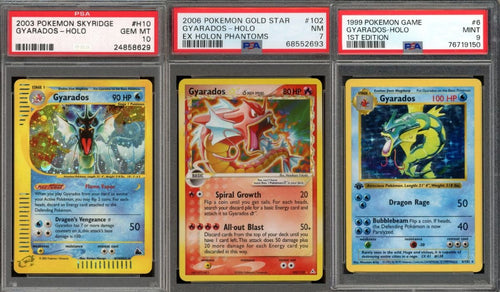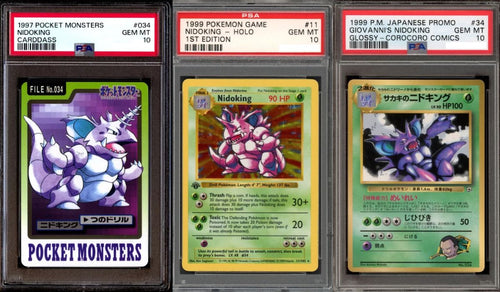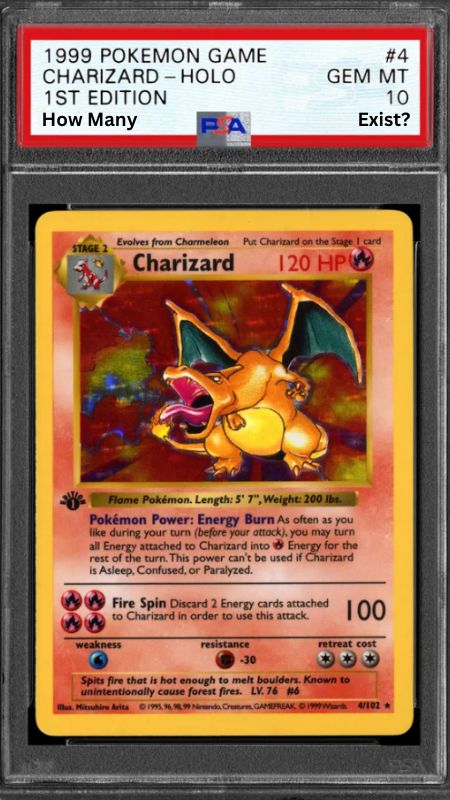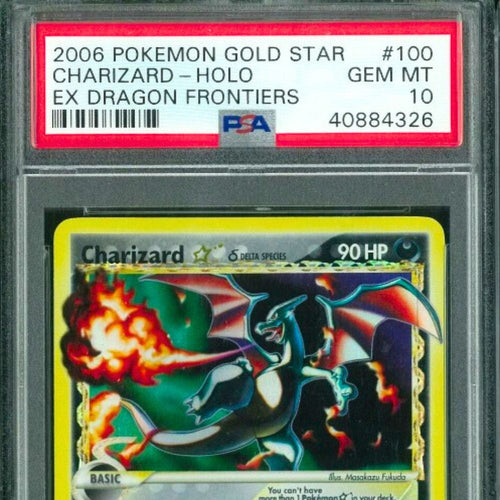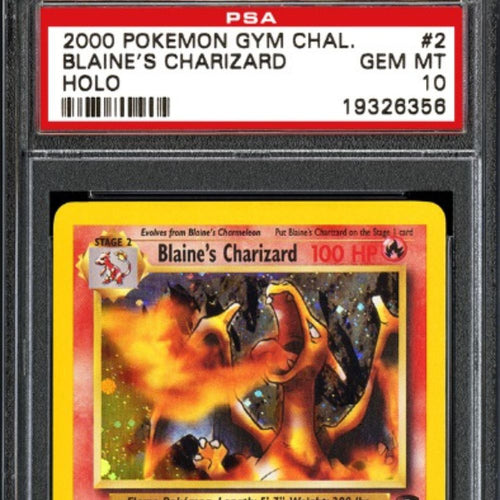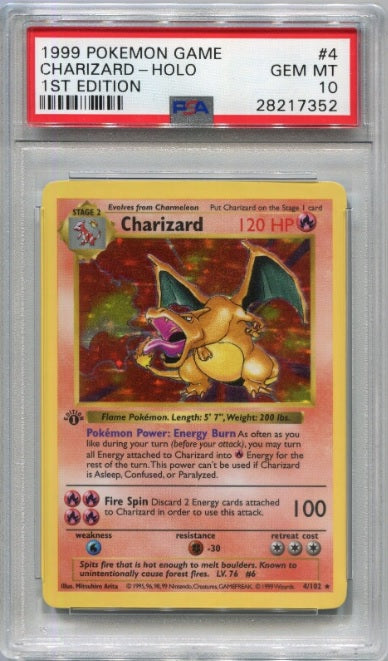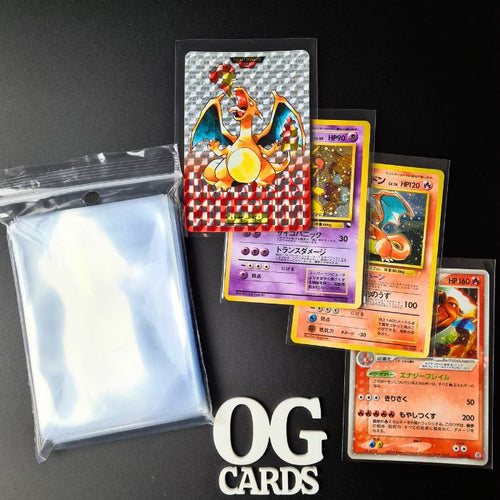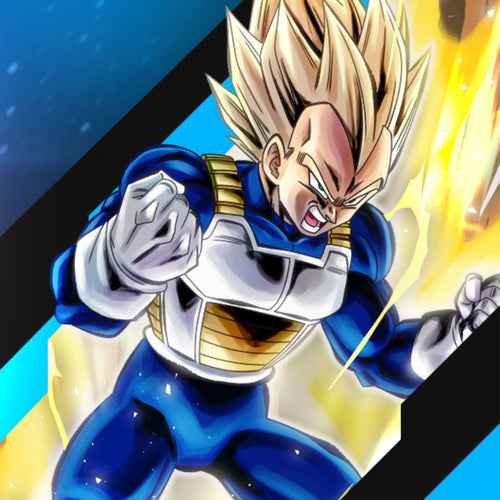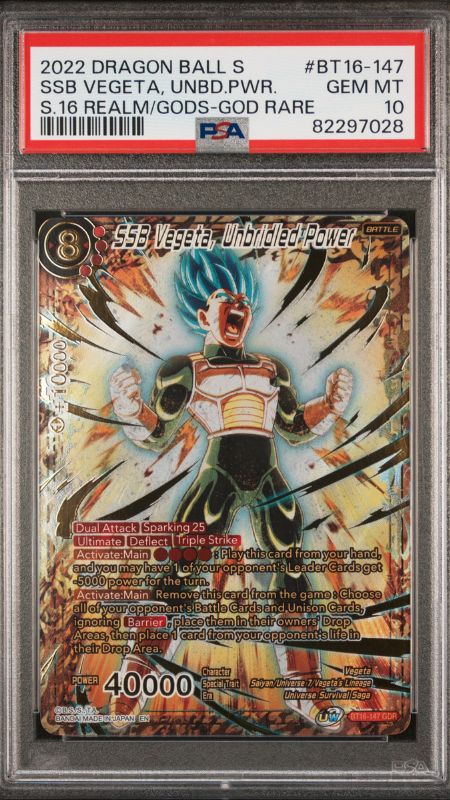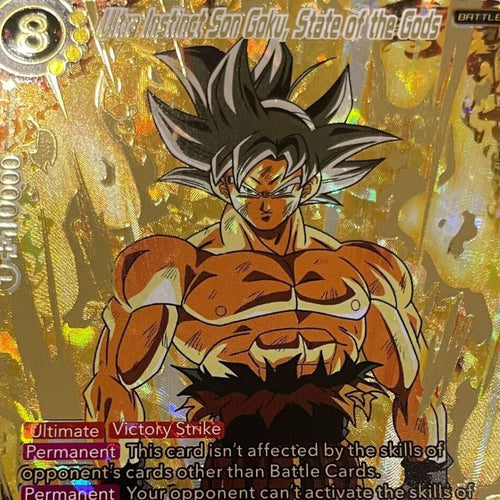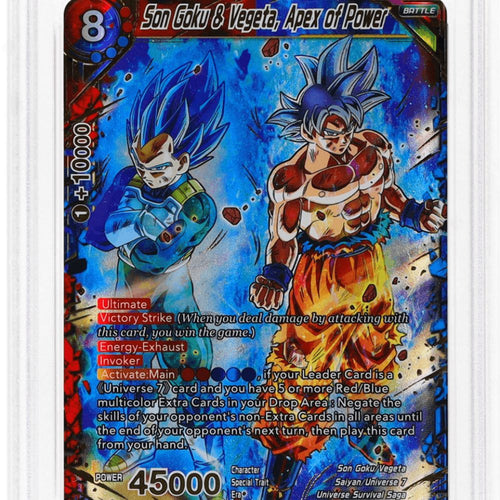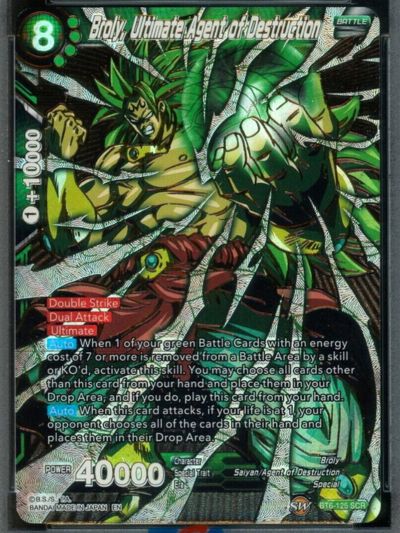
Investing in Dragon Ball Super Cards - Complete History & Future
Share
In 2017, the Dragon Ball Super Card Game (DBSCG) blasted onto the scene with the launch of "Galactic Battle." This article takes a deep dive into the game from a dedicated collector's perspective, chronicling the ups and downs of the market through personal experiences and insights from fellow enthusiasts. While individual journeys may differ, this account paints a vivid picture of the DBSCG's evolution.
Having actively bought and sold DBSCG cards since their 2017 debut, we've witnessed the ever-shifting tides of the market firsthand. While initial hype existed, prices remained relatively low compared to established giants like Pokemon. Special Rare cards typically hovered around the $1-5 mark, with early Secret Rares fetching between $20-40.
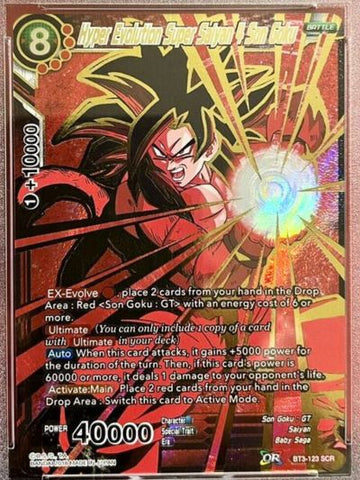
Fast forward to 2020, and we witnessed a meteoric rise – the same cards that once commanded mere dollars were suddenly selling for nearly twenty times their original value.
However, as with most markets, the upward trajectory couldn't last forever. Prices have since corrected, settling below the 2020 peak. This article delves deeper into the factors behind this shift and explores what the future may hold for DBSCG investors.
From Humble Beginnings to Meteoric Rise
The early days of Dragon Ball Super Card Game were marked by modest beginnings. Prices remained stable and low, with collectors primarily drawn to the artwork and characters rather than investment opportunities.
Secret Rares rarely exceeded $40, and even highly sought-after cards like Son Goku & Vegeta, Apex of Power and Son Goku, The Awakened Power took a considerable amount of time to reach even a few hundred dollars.

Special Rares were almost always priced below $5, and cards like the Goku SPR from Galactic Battle went for a few dollars despite the low pull rates, which was unknown to most people at the time.
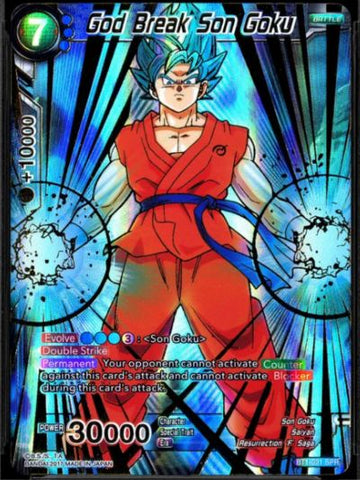
However, around the release of Set 10: Vermilion Bloodlines, things drastically changed. Prices skyrocketed, with SPRs that once sold for a few dollars suddenly fetching $50 or more. Booster boxes like Vermilion Bloodlines saw their value jump from $70 to $300 within weeks. Premium cards like Awakened Power, Apex of Power and their respective booster boxes commanded thousands of dollars on eBay.
This dramatic shift can be attributed to several factors:
COVID-19: With many people confined to their homes during the pandemic, disposable income increased and collectors sought hobbies like card collecting.
PSA's SMR July 2020 issue: This magazine, featuring one of the most prized cards at the time Son Goku The Awakened Power on its cover, exposed a wider audience to the Dragon Ball Super Card Game, attracting new collectors and fueling demand.
With a stunning headline that read "Dragon Ball Super A New Force in the TCG Market"
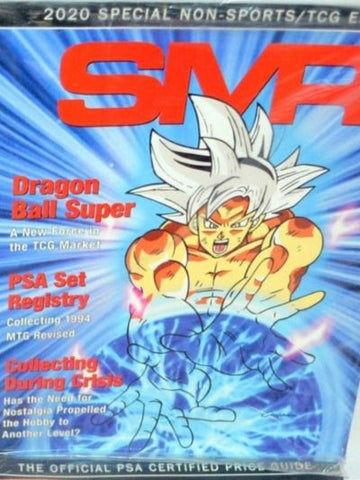
Limited supply: This further fueled the fire because Bandai initially underestimated the surge in demand, leading to shortages and further price increases.
This period of immense popularity saw Bandai release their first-ever "2nd Edition" sets for Set 10: Rise of the Unison Warrior and Set 11: Vermilion Bloodlines. These sets, identifiable by the "RE" inscription next to the "EN" on the cards, were intended to address player concerns about collectors driving up prices and making the game less accessible.
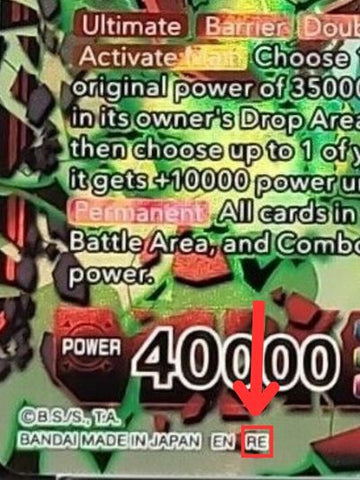
However, they never gained the same traction as the 1st Edition sets and still remain very difficult to sell and are still available at most card stores today at a heavily discounted price.
The peak of the boom saw collectors paying exorbitant prices for rare cards, with some rare cards fetching prices well over 5 digits. Booster boxes flew off the shelves, and collectors scrambled to acquire any product they could find. This period, a golden era for the game, marked a turning point in its history.
The Decline From The Boom
Following the release of Vermilion Bloodlines, a downward trend began with the Vicious Rejuvenation set. Sales fell compared to previous releases, and prices for subsequent sets declined steadily on the secondary market. This decline could have beeen attributed to several factors:
Saturation: The influx of new collectors during the boom period led to market saturation, causing prices to stagnate and eventually fall when the initial hype subsided.
Competition: Increased competition from other TCGs vying for players' attention and disposable income contributed to the decline of Dragon Ball Super cards.
Economic factors: The global pandemic and economic uncertainty likely impacted collector spending, further hindering the market.
Quick-profit mentality: Many collectors who entered the market seeking rapid gains became disillusioned when prices stopped climbing, leading them to offload their holdings, further pushing prices down.
Investor fatigue: Even seasoned DBS collectors lost interest as the market trajectory became increasingly uncertain.
Thank God
March 2022: After nearly two years, the release of the Realm of the Gods set ignited excitement with the introduction of the first ever God Rare card, SSB Vegeta, Unbridled Power. This set brought much-needed vibrancy to the DBS collecting scene, even attracting some collectors who had previously left the space.

As the only set to experience significant price increases since 2020, booster boxes reached nearly three times their retail value at the peak, and the God Rare card saw quite large online sales. However, this initial surge wasn't enough to sustain the collector base or reinvigorate investment, and prices eventually stagnated again.
Two sets later: Anticipating the next God Rare, collectors enthusiastically pre-ordered boxes, hoping for a repeat of the previous set's success. Yet, the reveal of Bardock, Goku's father, as the God Rare card surprised and disappointed many who had hoped for a more popular character like Goku.
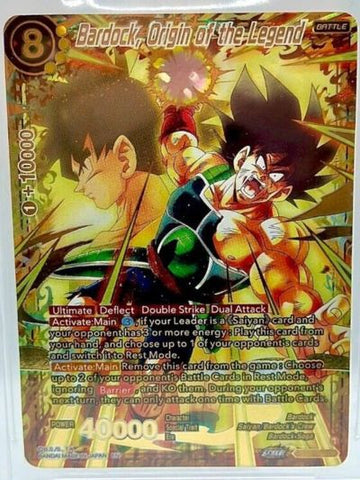
While the scarcity of the card ensured a somewhat continued interest, the initial reaction was mostly negative. Although the set booster box prices did manage to stay above retail price and climb a little bit, which was good to see.
Three sets later: Bandai responded by unveiling the next God Rare: Son Goku, Peaceful Resolution! However, scrolling through online comments revealed mixed reactions. Some collectors appreciated the choice, while others expressed disappointment, wishing for a different iteration of the character.
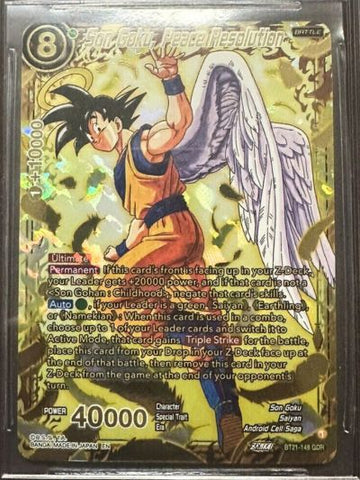
Despite the divided opinions, this God Rare release contributed to relative price stability within the market. Unfortunately, after a few months, sealed product prices from this set began to decline again, with sealed cases containing 12 booster boxes currently available for $600.
No Online Client?
Bandai initially promised an online client for the game. Players around the world were excited that they would be able to finally be able to play online against players around the globe instead of having to travel long distances to play against other players.
Turns out Bandai scrapped the whole idea and instead decided to bring out a completely different Dragon Ball Super card game that was to be played online, called Fusion Worlds. Which would be like a simplified version of Masters. Masters is what they call the main game now btw.
Anyway so that happened and majority of collectors saw this as Bandai no longer supporting the original Dragon Ball Super Card Game.
Yep it was a pretty crazy time. Comment sections were filled with 'I'm done.' and 'Dead game.'
Disappointment and anger filled online forums, fueled by the perceived shift in Bandai's focus. EBay became flooded with entire collections being unloaded for fire-sale prices, with some sellers offering their once-prized cards at a fraction of their original value. This mass exodus triggered a domino effect, leading to widespread panic and further sell-offs. Fear spread amongst a lot of the collectors who also began to offload their collections and selling their once prized cards for pennies on the dollar.
So picture the average person seeing the price of cards come down for years on end and then gets smacked with this announcement from Bandai.
To put card prices in perspective, for example a SPR rarity card you bought at the peak in 2020 was worth $10, 3 years after that it's worth $3 and then after the Bandai announcement you were lucky to get a dollar in the secondary market.
The once-booming market for Dragon Ball Super Card Game collectibles hit rock bottom during this period. Even coveted PSA 10 cards, typically fetching hefty sums, couldn't cover the cost of grading.
Awakened Goku cards filled up eBay listings and dropped below $1,000 for the first time since its pre-2020 peak.
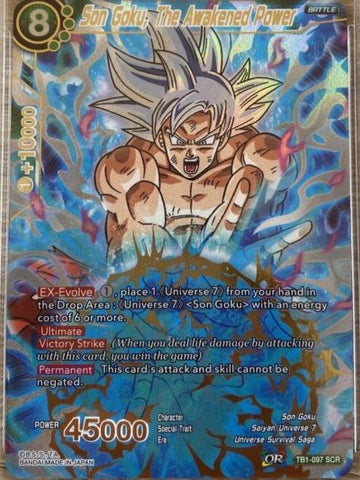
Even graded perfect 10 rare cards like Broly, Ultimate Agent of Destruction, with a pull rate of only 1 in 24 booster boxes making it one of the hardest SCR rarity cards to acquire in the entire game, plummeted from well over $1,000 to a mere $200. This dramatic decline mirrored the broader market panic, leaving collectors in disbelief and uncertainty.

Card prices went absolutely bonkers. Not in a good way.
By the way, this only happened about 4 months ago. Though prices have stabilized after the crash, their current level remains considerably lower compared to the heights of 2020, suggesting a protracted recovery process.
Goku To Save Us
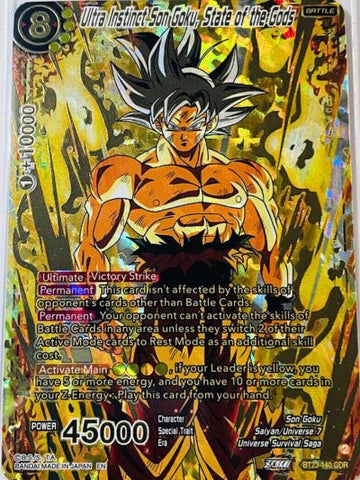
Just eleven days ago, Bandai graced the Dragon Ball Super Card Game community with the release of "Perfect Combination," a set containing one of the most breathtaking cards ever seen, Ultra Instinct Son Goku, State of the Gods BT23-140 GDR. This single card sparked a wildfire of excitement on Reddit, with one user even going as far as to offer "multiple organs" in exchange for it!
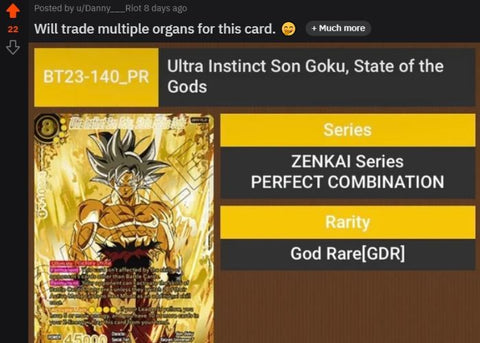
See I wasn't lying.
The recent release of the "Perfect Combination" set unleashed a wave of joy across all Dragon Ball Super Card Game platforms, all centered around one card of unparalleled beauty. Its stunning artwork and impeccable design left collectors awestruck, with many expressing their admiration online.
Even before its official unveiling, the card had generated substantial buzz thanks to an unexpected leak online. Someone, through alleged data scraping of the Bandai website, revealed the card's existence, igniting a fire of anticipation within the community. This leak, while unintended, may have actually contributed to the card's immense popularity.
As we've documented in previous article Is Perfect Combination Booster Box worth it? collectors have reported wildly different experiences in their quest for this elusive God Rare. Some have opened as many as 8 entire cases without success, while others have miraculously found it within just a few packs.
Regardless of the pull rate, there's no denying the allure of this dynamite card. DBS collectors worldwide are eagerly tearing through packs in the hopes of securing their own piece of this captivating artwork, making it one of the most sought-after cards in recent memory.
Is Dragon Ball Super Cards Dying?
From a collector's perspective - No, it's not. As seasoned collectors who have been buying and selling since release, we can confidently say the game is far from dying. Look at older Dragon Ball Z card games like Score Saga, where cards from 2003 still fetch thousands of dollars despite the game's discontinuation.
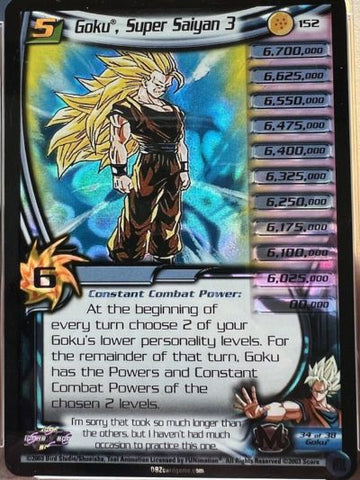
Even if the game itself were to end, collectors will continue pursuing their collection goals. High-end players may invest hundreds in competitive decks, adding cards over time for a few dollars. Meanwhile, dedicated collectors spend thousands on retail boxes and rare cards. So, even if the player base shrinks, collectors will still be there, ready to buy.
Similar to many collectors, we have no clue how to play Pokemon (and still don't!), yet that doesn't deter us from collecting. Dragon Ball is more than just a passing fad; it's a cultural phenomenon etched in the memories of millions who grew up with it. This franchise will forever be ingrained in our minds.
The artistic quality, texture, and foiling of Dragon Ball Super cards are undeniably superior compared to other TCGs. But before we delve into future possibilities, let's address the current challenges for collectors:
DBS Cards: Potential Pitfalls for Investors
- Low Card Prices: Currently, most individual cards are priced very low, making booster boxes an unappealing investment as the total card value often falls below the box cost.
- Retail Stagnation: Recent sets have experienced declining prices and are readily available on store shelves, unlike popular TCG sets that typically sell out quickly.
- Distributor Discounts: To clear excess inventory, distributors have offered discounts to local game stores, indicating a lack of demand and potential market saturation.
- Competing TCGs: The release of new and exciting Trading Card Games (TCGs) featuring popular franchises could draw players and collectors away from DBS, potentially impacting demand and card values.
- Economic Pressure: Rising global interest rates and economic uncertainty can tighten consumer spending, potentially reducing disposable income and impacting investment decisions in collectibles like DBS cards.
- Bandai's New Dragon Ball Card Game: The announcement of a new Dragon Ball card game by Bandai has raised concerns among some collectors. While it could potentially introduce new players to the franchise, it could also cannibalize interest in the original DBS TCG and create a sense of competition within the market.
- Lack of Online Client: The absence of an official online platform for playing DBS TCG can limit accessibility and engagement for players, potentially hindering the game's growth and impacting collector interest.
- Uncertainty surrounding the future of the game: Despite the recent introduction of God Rare cards, the long-term vision for the DBS TCG remains unclear. This lack of clarity can create a sense of uncertainty among investors and collectors, potentially impacting their investment decisions.
Investing in DBS Cards: Why it Could Pay Off
- Collectors' Paradise: The current low prices of individual cards offer a unique opportunity for collectors to acquire desirable cards at a fraction of their former value, expanding their collections without breaking the bank.
- Reduced Investment Risk: With sets readily available at or below retail price, the financial risk associated with investing in Dragon Ball Super cards is significantly lower compared to purchasing overpriced sets in other TCGs. This allows for a more calculated and less risky investment approach.
- Potential Player Influx: Bandai's new, simplified Dragon Ball card game could potentially attract a new generation of players unfamiliar with the franchise. As these new players become more immersed in the Dragon Ball universe, they may be drawn to the more complex and strategic gameplay offered by the original DBS TCG now called Masters, leading to an expansion of the overall player and collector base.
- Renewed Franchise Hype: The upcoming Dragon Ball Super series has the potential to reignite widespread interest in the franchise, similar to the surge experienced by One Piece after its release on Netflix. This renewed hype could attract new players and collectors to the DBS TCG, boosting demand and potentially increasing card values.
- Disney's Involvement: Disney's ownership of the Dragon Ball film rights opens up exciting possibilities for future projects such as movie releases or streaming adaptations. This increased exposure could elevate the franchise's visibility and attract a broader audience, further strengthening the market for DBS products, including the card game.
- High-Rarity Chase Cards: The introduction of God Rare cards has undeniably injected excitement and anticipation into the DBS TCG. With some cards commanding significant prices due to their rarity and desirability, these chase cards incentivize collectors to continue investing and participating in the market, potentially driving up secondary market values and creating a more vibrant community.
- Strong Brand Recognition and Legacy: Dragon Ball is not just a passing fad; it's a cultural phenomenon with a devoted fanbase spanning generations. This strong brand recognition and established legacy provide a solid foundation for the DBS TCG, suggesting its potential for continued growth and longevity despite temporary challenges.
- Potential for Future Innovation and Development: Bandai has the potential to further revitalize the DBS TCG through innovative mechanics, exciting new cards, and engaging online platforms. This potential for future development could attract new players and investors, contributing to the overall growth and stability of the game.
It's important to note that these are just some of the potential positives for collectors and investors. While the future of the DBS TCG is uncertain, the current situation presents both challenges and opportunities. By carefully considering both sides of the equation, collectors and investors can make informed decisions about their involvement in the game.
Conclusion.
Dragon Ball Super isn't just some fleeting anime fad; it's a cultural phenomenon etched into the memories of millions who grew up watching it. From Goku's epic showdown with Frieza on Namek to Majin Vegeta's tear-jerking sacrifice against Buu, these moments have become ingrained in our collective consciousness.
Even if the future holds uncertainty for the cards themselves, the Dragon Ball legacy will undoubtedly endure. Whether it's the stunning artwork or the sheer love for the franchise, there are countless reasons why collectors are drawn to Dragon Ball Super cards.
With prices at their lowest in years, this presents a unique opportunity to acquire coveted cards previously out of reach. For passionate fans and collectors, this isn't just about potential investment returns; it's about owning a piece of a beloved universe and celebrating the timeless legacy of Dragon Ball.
While the immediate future of Dragon Ball Super cards might be uncertain, the franchise itself boasts an undeniable resilience and enduring appeal. With the upcoming series and the possibilities opened by Disney's possible future involvement, Dragon Ball is poised for a resurgence that could potentially carry its card game into a bright future as well.
Whether through renewed fan interest, exciting new mechanics, or the sheer power of the Dragon Ball brand, the potential for Dragon Ball Super cards to experience another surge in popularity remains strong. This, coupled with the passionate fanbase and the dedication of collectors worldwide, creates a foundation for a future where Dragon Ball Super cards continue to captivate and inspire fans for generations to come.
At the time of writing this Perfect Combination Booster boxes (newest set just released 11 days ago) are selling for $51.98 on TCGPlayer. Prices of cards in general are also still slowly slipping downwards. I look forward to coming back in a couple of years to this to see how the whole space is going and how it compares.
Nothing said in this article is to be used as financial advice. Everything said in this article is what I and other collectors in our circle have experienced. Always do your own research before making any investment decisions.
